The Science of the Local Group
The story of our neck of the woods, on the most cosmic of all scales.
“We live in a world that has narrowed into a neighborhood before it has broadened into a brotherhood.” –Lyndon B. Johnson
The question of where we come from is one that we’ve all wondered about, and is perhaps the most daunting philosophical question in all of existence. The fact that we can — and do — ask this question at all is perhaps the most distinctive feature of what separates humans from all the other animals. And yet, if we want to try and answer than question, to understand where we came from, we have to start by learning exactly what and where we are in the grand scheme of things.

It took humanity thousands of years to understand that the Earth was round, that it was just one of many planets orbiting the Sun, and that the Sun was just one of many thousands — and then millions, and then billions — of stars in our galaxy.
And it was less than a century ago that we learned that the great spiral and elliptical nebulae in the sky were neither proto-stars nor objects within our own galaxy, but were entire “island Universes,” or galaxies unto themselves.
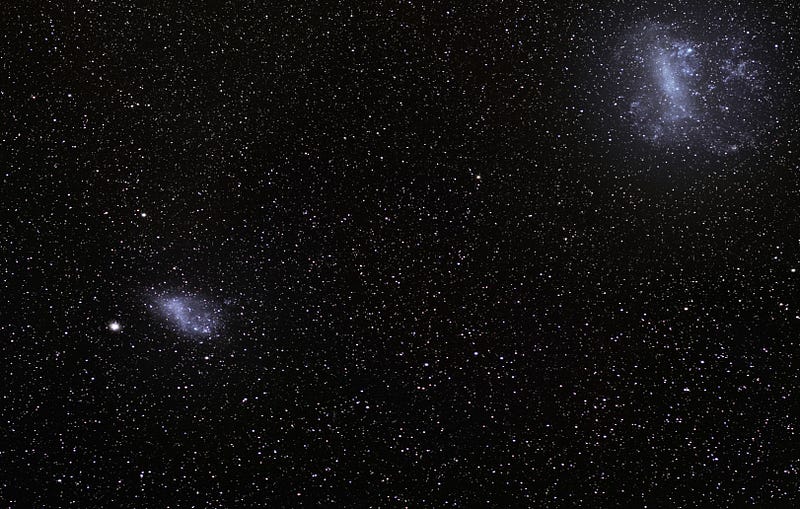
All the galaxies we can see with our naked eye:
- Andromeda,
- the Triangulum Galaxy,
- the Large Magellanic Cloud,
- and the Small Magellanic Cloud,
are relatively close by in the grand scheme of things. These four bright galaxies, along with about 50 or so other, smaller, fainter ones, make up our local group. This collection of individual, bound galaxies small-and-large represents our cosmic backyard: our local corner of the grand Universe.
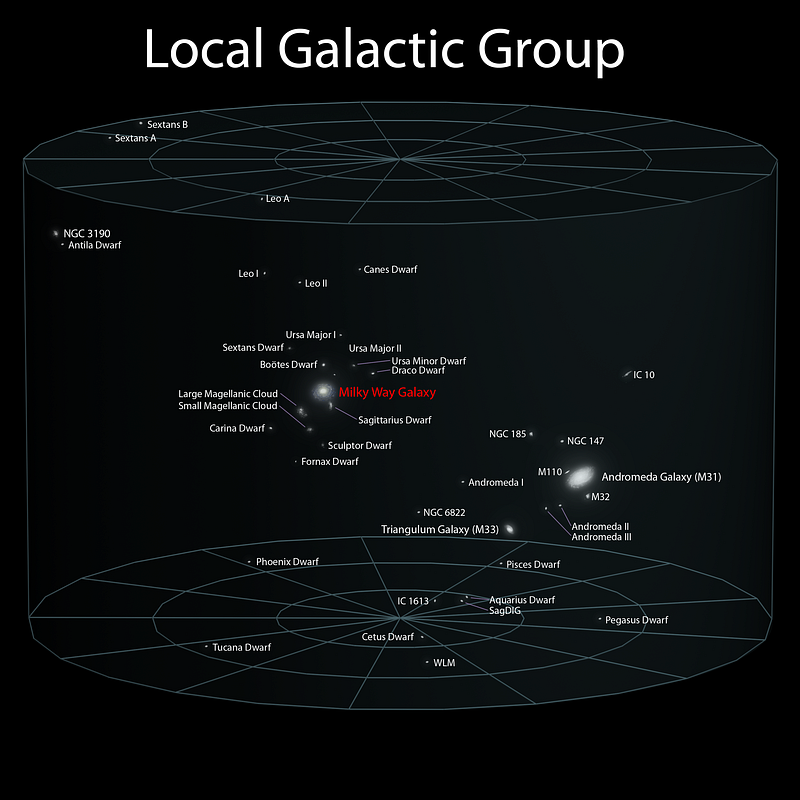
There are much larger collections both of mass and stars out there. The most massive ones, instead of containing a few trillion stars and spanning maybe 10 million light years across, contain thousands of times the mass of our own local group, and can span volumes tens-of-thousands of times as great as the space our neighborhood takes up.
Of couse, there are also smaller collections out there, including the most extreme of all: galaxies in total isolation, not bound to anything else. These “field galaxies” may exist all by their lonesome, destined to roam the Universe in eternal solitude.
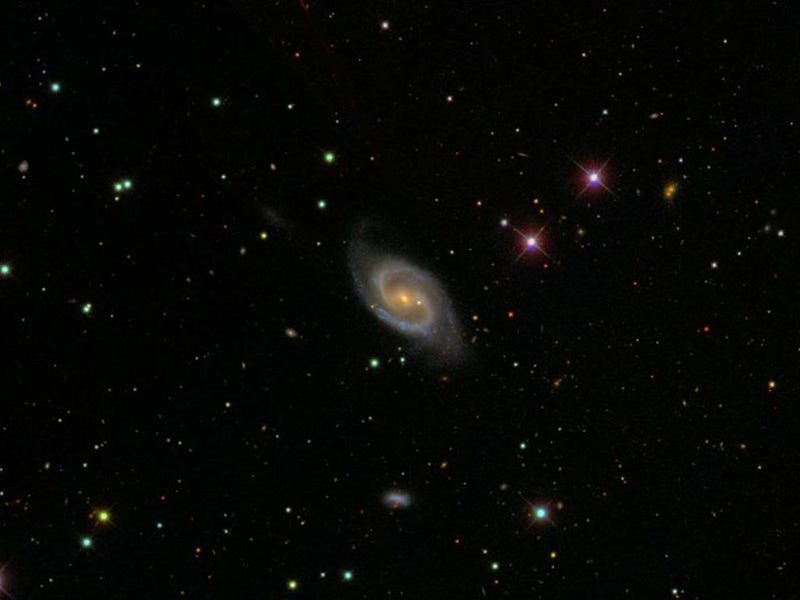
What determines what winds up in a cluster, group, or isolated all by its lonesome? Believe it or not, the story goes all the way back to before the Big Bang, back to the seeds that gave rise to the Universe itself. To tell this story accurately, we have to go all the way back to the earliest stages of the known Universe, to a period where the fabric of space consisted of nothing at all.
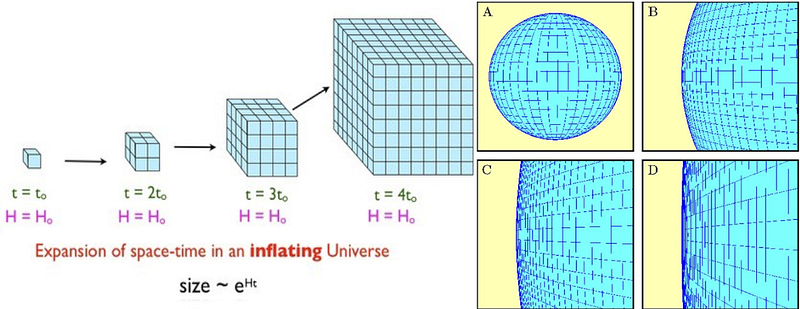
Nothingness, when you think about it in terms of the physical Universe, isn’t quite so simple. You might think about removing all the matter and antimatter, all the radiation, all the particles and antiparticles, all the curvature of space due to gravitation, and anything else you imagine. Surely, there can be nothing that’s more “nothingness” than the fabric of empty space itself?
And yet, when you do exactly that, you find that empty space itself isn’t so empty, but rather has a certain amount of energy intrinsic to it, itself. There are a few different ways to visualize it:
- like particle/antiparticle pairs popping in-and-out of existence,
- like a flat sea with tiny “ripples” in it,
- or like a fluctuating “foam” of space, not quite perfectly flat.
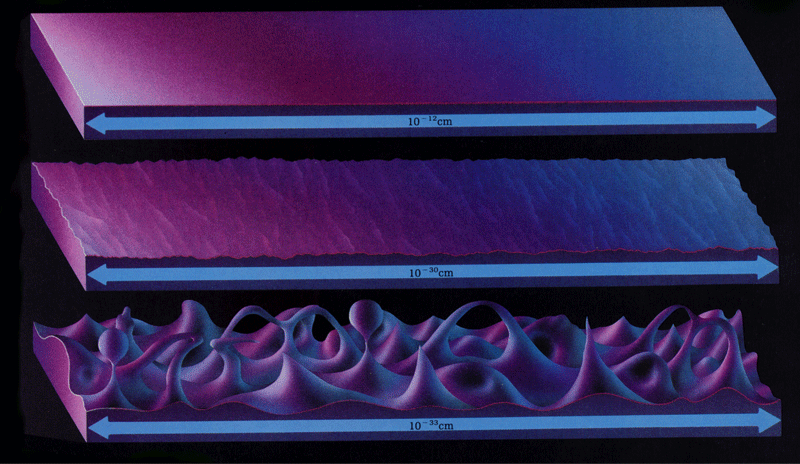
The point of this is, though, that what appears to be empty space isn’t devoid of energy at all. In fact, during this epoch of the Universe, empty space had a tremendous amount of energy inherent to it. This period of time was known as cosmic inflation, and resulted in a period of exponential expansion of the Universe. And during this time, what do you suppose happened to these quantum fluctuations?
They get stretched across the Universe, too.
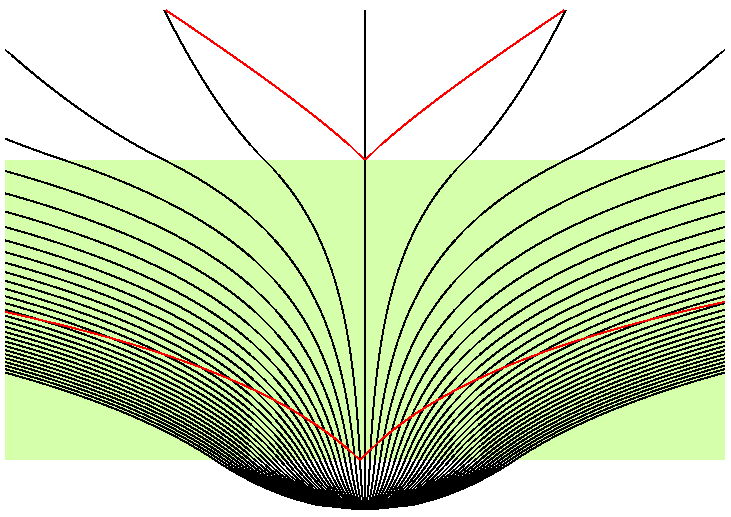
When inflation comes to an end, these fluctuations are all stretched equally across the Universe, creating a scale-invariant spectrum of fluctuations, meaning that there are hot-and-cold spots, corresponding to areas of overdensity and underdensity, located on all scales: from the smallest to the largest. And the energy inherent to space itself gets converted into matter, antimatter and radiation, producing the hot Big Bang.
Over time, gravitation and radiation pressure interact, creating a pattern of fluctuations in the Universe: the pattern we see imprinted in the Big Bang’s leftover glow, or the Cosmic Microwave Background.
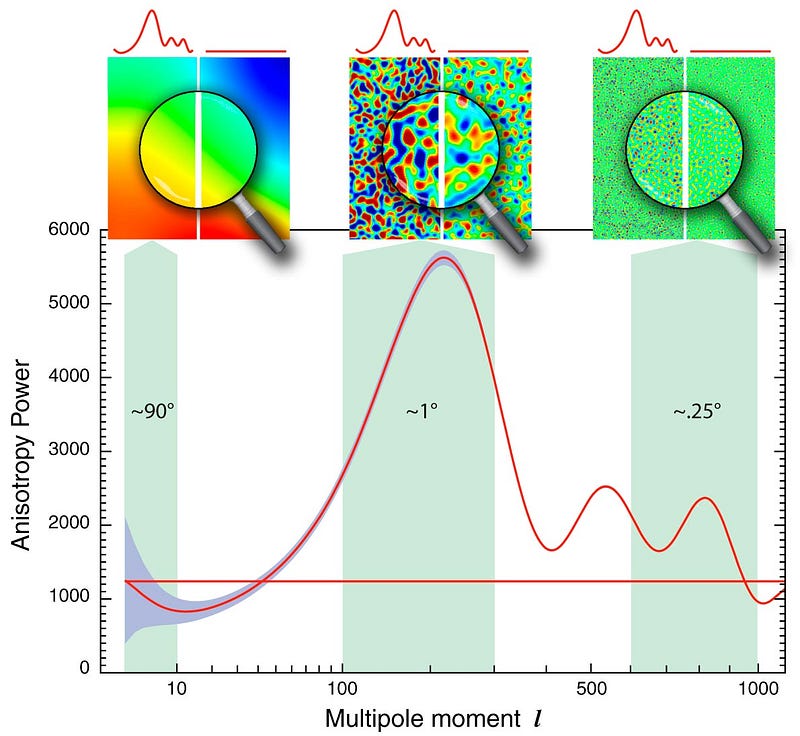
The cold spots are regions of slightly more matter than average, while the hot spots are regions of slightly less matter than average.
The biggest, “coldest” cold spots will grow into the most massive, densest clusters (or even supercluster) of galaxies in the Universe, while the smaller cold spots will grow into groups or even individual galaxies on smaller scales. The hot spots, by comparison, will “shrink,” giving up their matter to denser regions, and becoming cosmic voids, or regions of space with very few galaxies in them.
Overall, the Universe becomes a giant cosmic “web” of structure, with with all these features — clusters, groups, field galaxies, and voids — all on display.
So with all that in mind, what is our Local Group? It grew from a relatively small “cold spot,” where the matter density was just slightly higher than average. Nearby to us were larger cold spots, things that grew into the Leo Group, the Virgo Cluster, and a little farther away, the giant of our nearby Universe: the Coma Cluster.
But none of those other structures are gravitationally bound to us; the Local Group is special because while the Universe expands, the ~50+ galaxies in our own backyard have had their mutual gravitation overcome the expansion of the Universe. And over time, while dark energy pushes the rest of the Universe away, causing all the other clusters, galaxies and groups to eventually become unreachable, everything in the Local Group will only become more tightly bound. Over the next few billion years, in fact, everything will merge together, with the highlight coming in about 3-to-5 billion years, when the two largest galaxies — the Milky Way and Andromeda — collide.
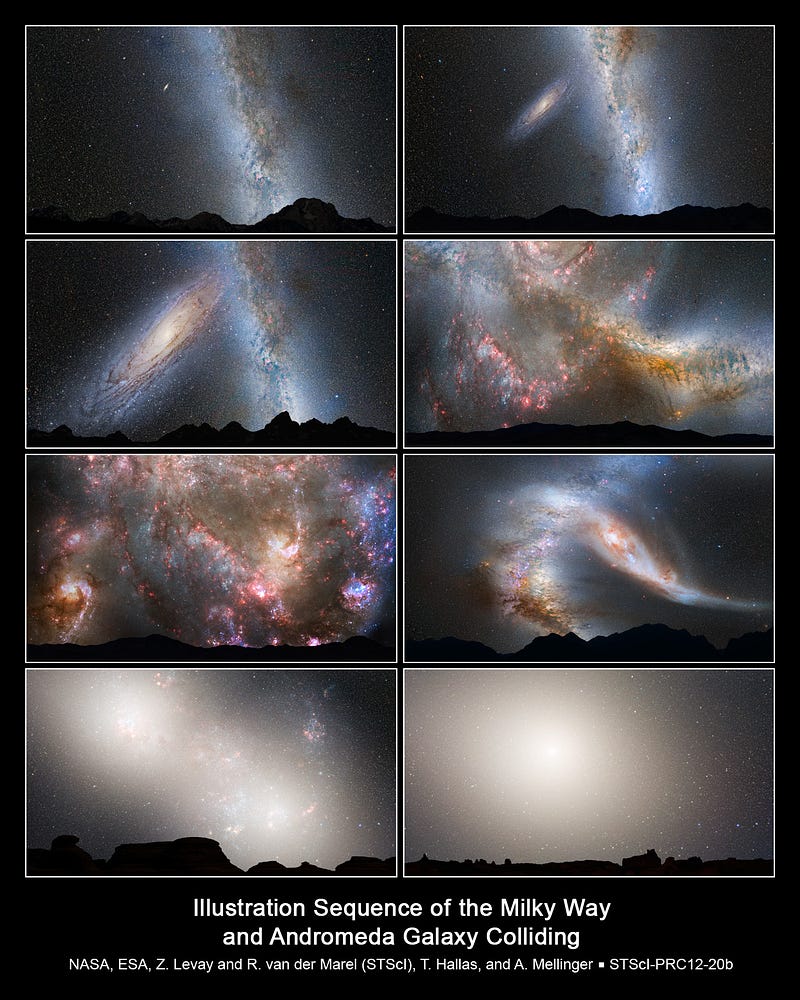
The result? In just a few billion years, our local group will all have merged together, becoming a single, giant elliptical galaxy.
And everything beyond? It will accelerate away, leaving us at a faster and faster rate. While our Local Group may seem quaint to us now, just two non-descript (and ~50 much smaller) galaxies amidst a Universe containing hundreds of billions of them, as the cosmos continues to age, the giant elliptical we’ll all become — Milkdromeda — will be the only galaxy left in the Universe accessible to us.
All of this, all the galaxies we see today (and every pixel in the image below is a galaxy unto itself), will all have disappeared from view.
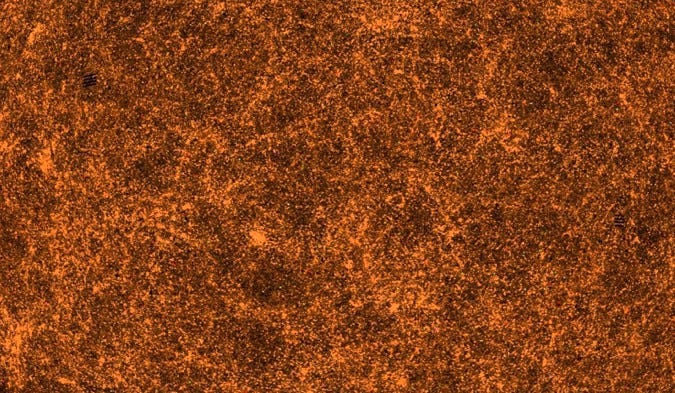
So cheer up! Not only has our Local Group, as isolated as it may be, given rise to such a magnificent variety of elements, stars, planets and organic combinations that our existence is possible, but it’s given us a Universe so grand and spectacular that just from our location — as isolated and remote as it is — we can perceive the entire Universe exactly as it is.
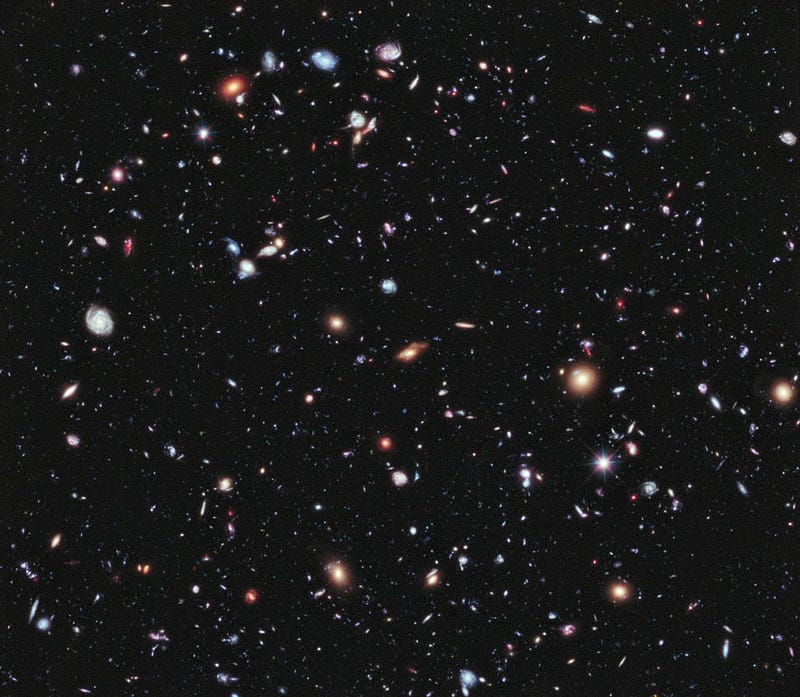
We can learn exactly where we came from, where-and-what we are and where we’re headed. And that’s something truly remarkable, indeed.
Leave your comments at the Starts With A Bang forum on Scienceblogs!





